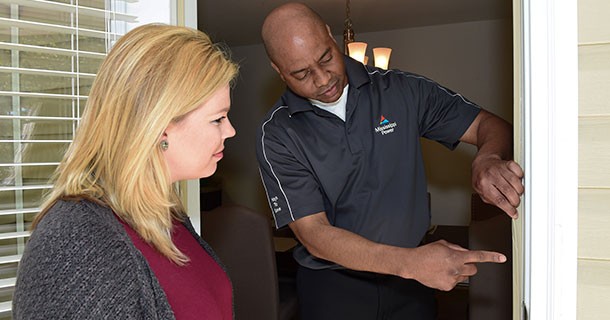Energy-Saving Tips
We've compiled a list of simple tips to help you save on energy while also helping protect the environment.
Heating and Cooling
- Keep your thermostat in the auto setting.
- Change your air filters monthly.
- Have your heating and air system serviced annually by a licensed professional.
- Do not let weeds, leaves or other debris obstruct your outdoor unit.
- Keep all interior doors and air vents open.
Heating
- Set your thermostat to 68° F or lower in the winter.
- Use your ceiling fan on low speed, in a clockwise direction, to force the warm air from the ceiling down to the living space.
- Open your blinds and curtains during daylight hours to help heat your home.
Cooling
- Set your thermostat to 78° F or higher in the summer.
- Use ceiling fans in occupied rooms to make you feel cooler.
- Close blinds and curtains during the day to block the sun’s heat.
Weatherization
- Check your insulation. Insulation reduces heat flow through your home’s building envelope, lowering your heating and cooling costs. Ensure every part of your house is insulated – attic, floors and walls. We recommend an R-38 value for attic insulation, R-19 for floors and R-13 for walls.
- Seal air leaks. Air leaks are one of homes' most significant sources of energy loss. Check around plumbing and lighting fixtures, light switches, windows and doors. Use weather stripping on windows and doors that don’t close tightly. Use caulk on small holes and expanding foam on larger areas.
- Properly seal ductwork. Gaps in joints and at plenums can cause your heating and cooling bills to increase by as much as 30% and can allow air contaminants to enter the home. Sealing with duct mastic is the best way to fix the problem permanently.
Appliances
Water Heater
- Insulate your electric water heater with an insulated blanket if the water heater is in an unconditioned space.
- Replace old water heaters with an ENERGY STAR model.
- Set your water heater thermostat to 120° F.
Refrigerator
- Recommended temperatures are 35-38° F for the fresh food compartment and 0° F for freezers.
- Cover food and liquids stored in the refrigerator. Uncovered foods release moisture making the compressor work harder.
- Replace old refrigerators with ENERGY STAR models. Top-freezer models are more energy efficient than side-by-side models.
- Make sure the seals are in good condition.
- Avoid putting refrigerators or freezers in unconditioned spaces.
Dishwasher
- Run the dishwasher when it is full but not overloaded.
- Let dishes air-dry instead of using your dishwasher's heated dry setting.
- Use the shortest washing cycle.
Washing Machine
- Wash full loads. It takes the same energy to wash a single item or a full load.
- Use cold water when possible to lessen the run time on your water heater.
- Replace your old washing machine with an ENERGY STAR certified washer.
Dryer
- Clean the lint screen after every load to maximize efficiency.
- Use a cool-down cycle to allow load to finish drying with the heat remaining in the dryer.
- Promptly remove clothes from the dryer to avoid ironing.
Cooking Equipment
- Use small appliances such as microwaves, crockpots or toaster ovens instead of the oven when possible.
- Keep the oven door closed while cooking as you lose 25° F to 50° F each time you open it to check on your food.
- Use pots and pans that properly fit the heating element.




